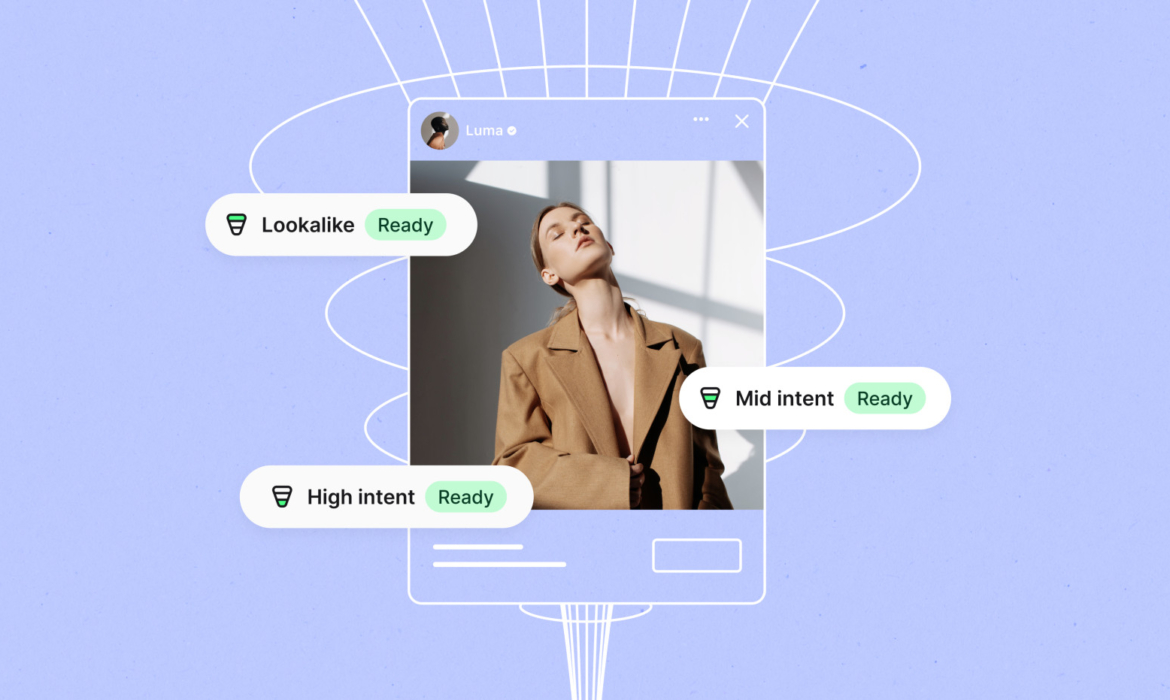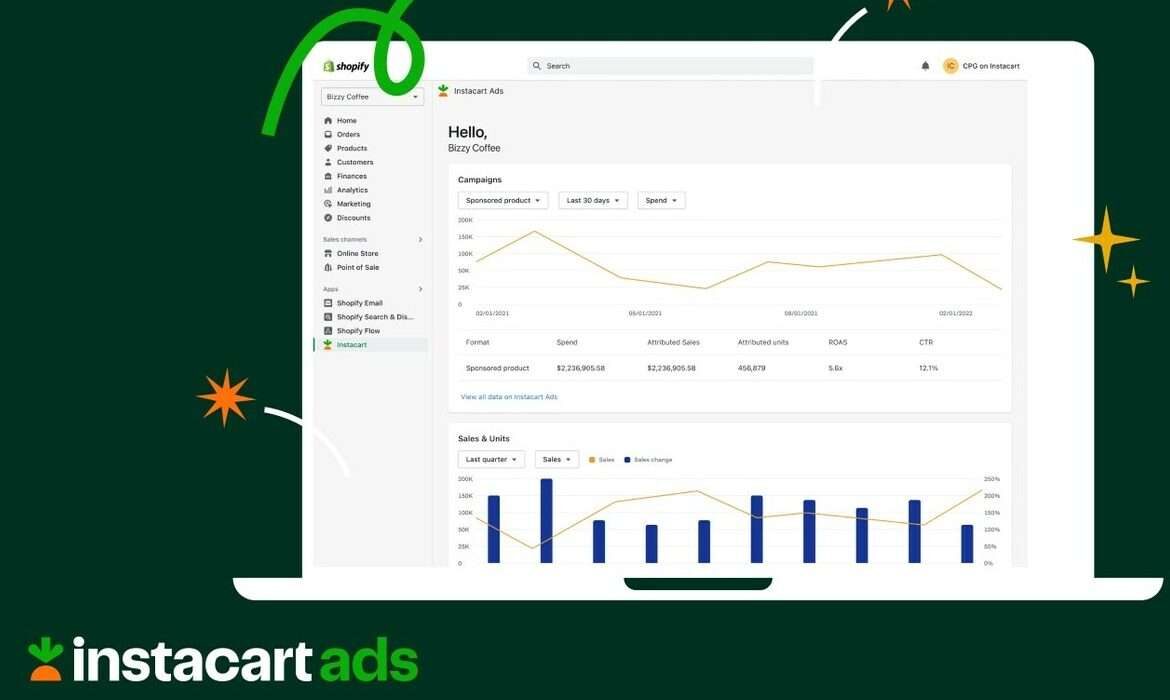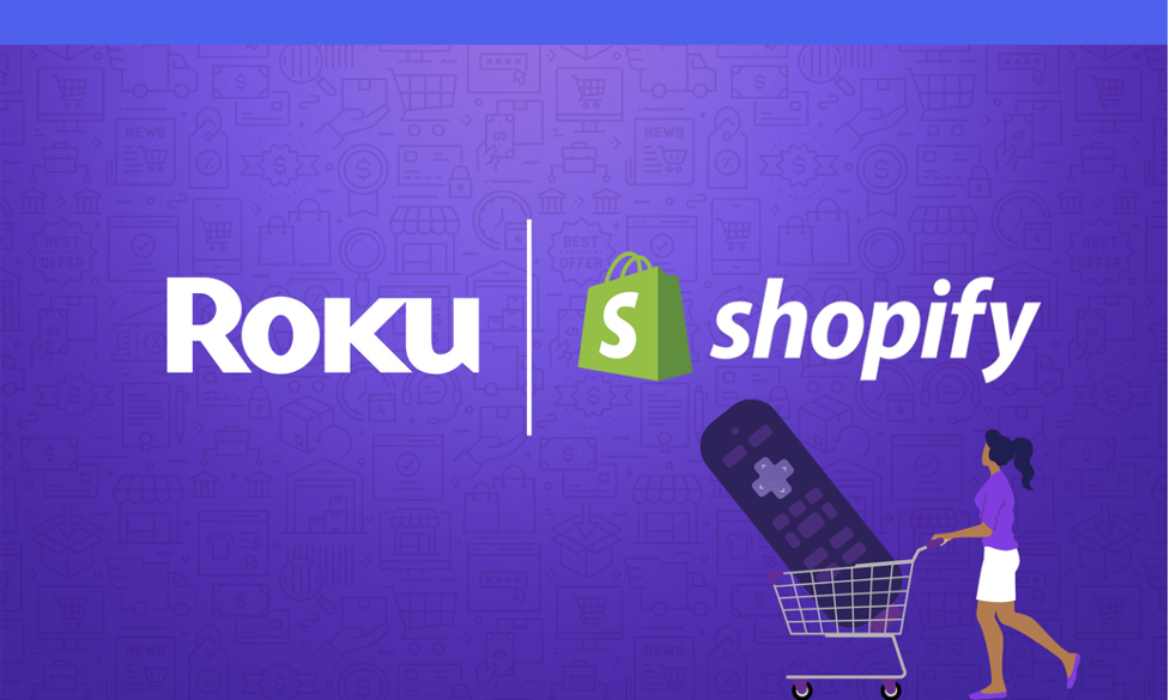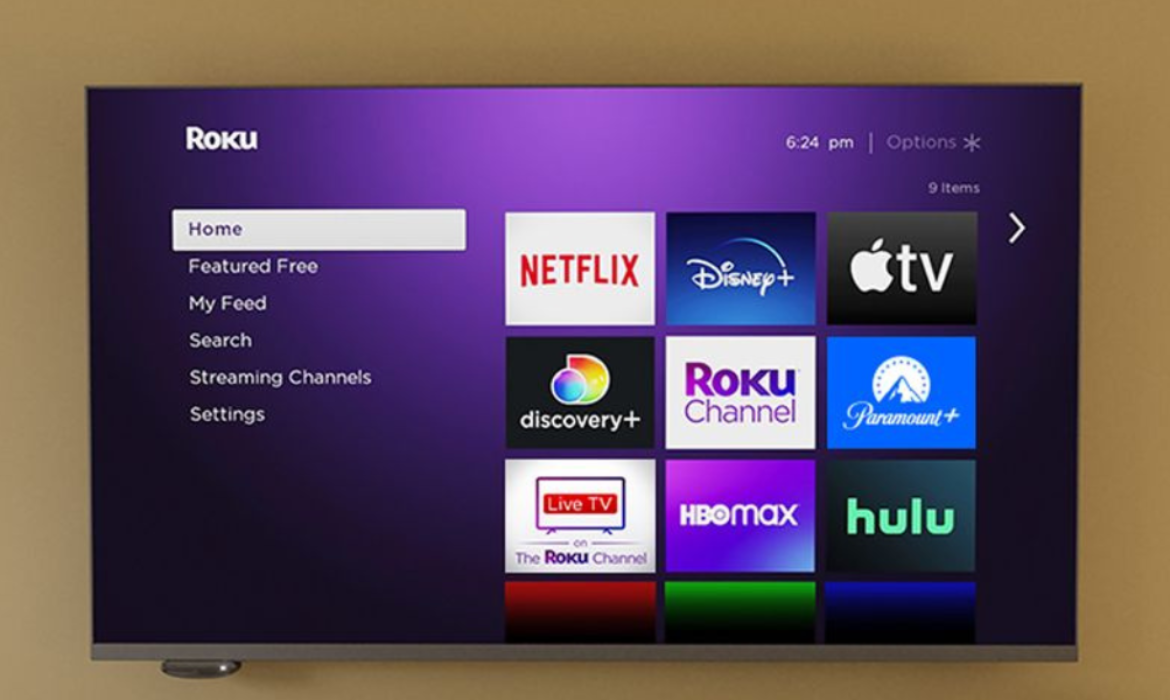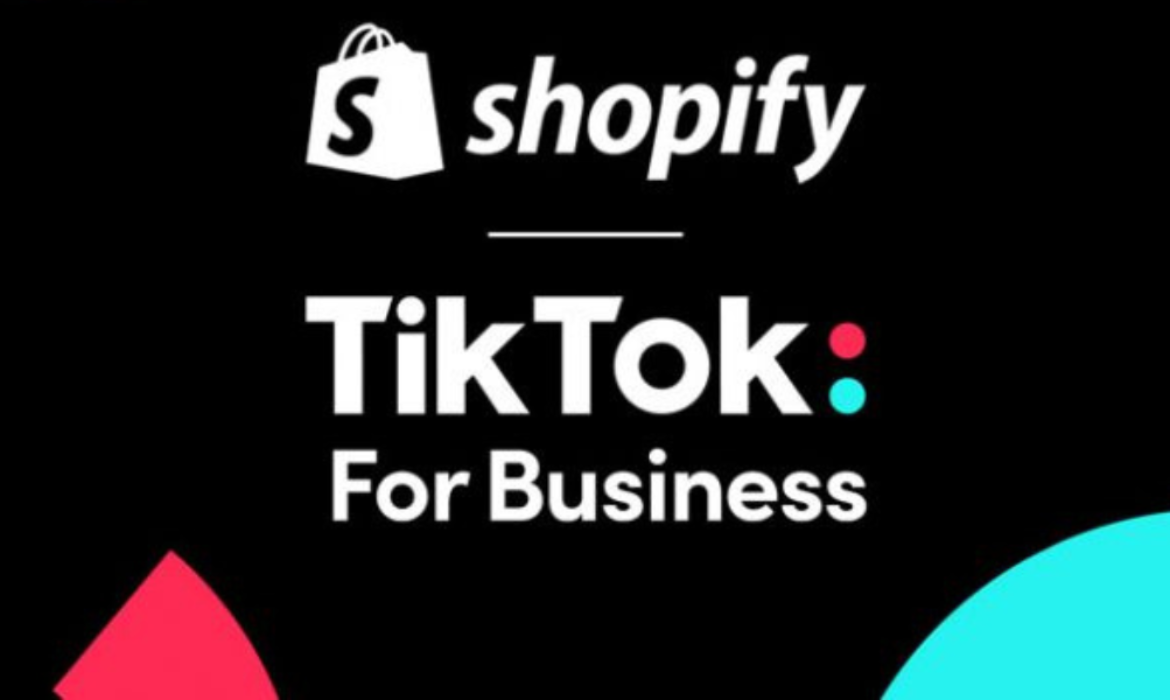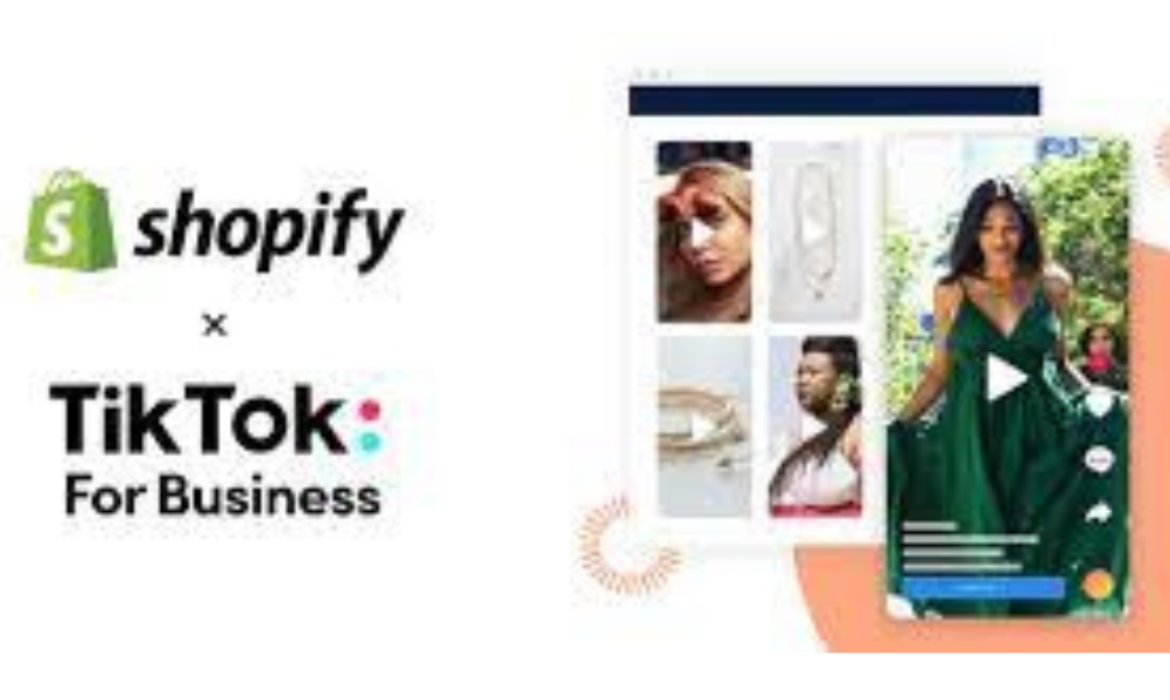Shopify Audiences Expands Ad Targeting Capabilities with New Integrations
Shopify Audiences, Shopify’s ad tech integration offering revealed a new ad targeting capability. Additionally, it increased the number of its partners. Initially, Shopify Audiences debuted with just Google and Meta. Later on, Pinterest was included in the mix. Recently, Shopify Audiences announced new connections with three significant ad platforms, Snap, TikTok, and Criteo. The collaborations increase the effectiveness and reach of Shopify Plus merchants, enabling them to more precisely target customers. The platforms will be able to connect to Shopify utilizing their preferred ad network for modeling data.
Shopify audiences
Shopify Audiences was introduced last year with the goal of streamlining client acquisition and assisting retailers in raising their return on ad spend (ROAS). It now offers greater analytics and links to new ad channel partners, including Snap, Criteo, and TikTok, thanks to an updated version. It also has the best algorithms yet, which can cut customer acquisition costs by as much as 50%. The strong ad platform alliances enable Shopify Plus retailers to contact their target clients more extensively and affordably.
Benchmarking functionality for optimized ad performance measurement
With the help of Shopify Audiences’ benchmarking feature, retailers can assess how well their advertising campaigns are performing against those of other companies in a similar industry. The function also offers additional insights and makes it easier to make data-driven decisions. It enables businesses to improve the effectiveness of their advertising. The updated features add to a tool that is always being improved to increase consumer acquisition and return on advertising spend. For instance,
T-shirts created to order are available from a vendor. Despite the fact that they sell clothing, they are not high-end outfit designers. With Shopify Audiences’ new benchmarking feature, they can assess the success of their campaigns against those of other, comparable businesses, not only clothing stores. With a more apples-to-apples comparison, this offers more insightful information.
Read More: Roku-Shopify Revolutionize TV Ads By Enabling On-Screen Purchases
The Shopportunity
Shopify Audiences does not collect or offer user-level data. It can create unique audiences who could be interested in a certain product. This is thanks to Shopify’s data modeling hub, which is based on Shopify’s analysis of its merchant base. In comparison to other payment-based advertising products, Shopify Audiences offers less privacy exposure. Shopify is now at ease adding third-party programmatic thanks to Criteo.
The algorithm becomes more effective as more companies use Shopify Audiences and sign up for the platform, using particular insights from customers across participating shops. This in turn boosts output, creating a positive feedback loop. The success of Shopify Audiences is heavily dependent on this loop. Additionally, it’s stated that Shopify Audiences is a major factor in why merchants decide to upgrade to Plus, with many implementing it an average of one week after their upgrade.
Shopify Purpose
The Shopify Plus package, a more expensive membership level for their e-commerce platform, includes Shopify Audiences. Shopify doesn’t receive any CPM revenue. Furthermore, unlike retail media networks, it doesn’t receive a cut of revenues or a high CPM associated with such purchases. This implies that Audiences aren’t always a significant revenue generator. Instead, as it includes new merchants in the Plus category, it gains value. Increased sales from all merchants benefit Shopify, which receives a fee for processing payments. Shopify could easily enter the media category and tie its data to CPM if it wanted to increase its audience revenue. It is the only platform that Meta would consider using to replicate its sales attribution network for e-commerce sellers.
Read More: Criteo’s Commerce Max DSP Unites Retail Media with General Availability
Shopify Momentum
The products from Shopify work together to develop better services for retailers and give them a unified offering. Shopify Plus retailers can use their Shopify Credit cards to pay for their advertising costs while receiving cash back. The audience is a special advantage that only Shopify offers. It uses the combined strength of Shopify merchants to make it easier for them to efficiently attract new clients. Shopify makes investments in this area to help companies reach clients worldwide. Retailers could be reluctant to provide information that will be gathered and then used by other merchants, including potential rivals. They may view their involvement with Shopify Audiences as a means to connect with fresh potential clients.
Here’s what they said
Shopify’s VP of Advertising, David Wurtz said,
Shopify is at the forefront of commerce. Wherever there’s an opportunity to connect merchants and buyers, Shopify is there first. Since launching Shopify Audiences last year, our algorithms have only gotten smarter and more effective thanks to the collective power of our merchants. We’ve long said that commerce is not a zero-sum game. Together, the independent merchants on Shopify help each other win. A lot of the inventory on the open web is underappreciated and underpriced. With the addition of Criteo, Shopify can drive “a lot of volume” of ads to the web and improve customer acquisition costs for its merchants, just like the big social platforms have for particular brands or categories.
Rory Mitchell, Criteo’s GM of global growth added,
Aside from access to Shopify custom audiences, Criteo “can then show the power of our platform, which allows a Shopify merchant to think about things like onboarding their first-party data to our platform for retention or retargeting campaigns. It’s a “natural progression,” he added, from the modeled approach to Criteo’s shopper graph products, which do use onboarded first-party data. And we know how to get performance for these customers in a way that is really scalable across the open internet.
Ali Rana, Global Head of Revenue Partnerships for Snap commented,
We’re thrilled to team up with a commerce leader like Shopify to enable merchants to reach more high-intent shoppers on Snap.
Read More: New ‘Instacart for Shopify App’ Revolutionizes Merchant Advertising
New ‘Instacart for Shopify App’ Revolutionizes Merchant Advertising
The most prominent grocery technology firm in North America, Instacart, recently unveiled a brand-new Instacart for Shopify app. The novel solution gives Shopify’s up-and-coming consumer packaged goods (CPG) firms access to Instacart Ads. Shopify businesses can now seamlessly connect to Instacart Ads’ tools, insights, and automation. Over 1400 retail banners throughout North America are partnered with Instacart. With this innovative integration, Instacart continues to support emerging brands’ rapid growth. Additionally, it would provide Shopify merchants access to crucial sales information and self-serve ad goods. This indicates that many CPG brands on Shopify are probably generating revenue through the Instacart Marketplace without taking any additional action.
Instacart and its partners
The announcement strengthens Instacart’s dedication to assisting up-and-coming firms in driving omnichannel growth. Instacart simplified the design of Ads Manager in the previous year so that marketers could quickly select an aim and receive customized, enhanced suggestions for the ad forms. To achieve their corporate objectives, they included specific targeting and bidding alternatives. The business has increased its measurement capabilities. In order to assist brands in discovering the real effect of their Instacart Ads campaigns, it also provides sales lift testing and A/B testing. The average increase in sales for Instacart’s brand partners is above 15%, and in certain situations, it is even higher.
Instacart Integration with Shopify for merchants
For the first time ever, Shopify merchants can promote their company with Instacart Ads by using the Instacart for Shopify App. By offering insight into their Instacart sales directly in Shopify, where they already oversee the rest of their business, the new Instacart for Shopify app aids merchants in better understanding their business. With this visibility, businesses can take action to expand their reach and success among Instacart users.
The Instacart for Shopify App enables retailers to simply create an Instacart Ads Manager Account, view high-level ad performance analytics, and track their overall sales on Instacart. This integration serves as further evidence of Instacart’s commitment to providing new businesses with the resources and market knowledge they require to develop and engage with customers at the point of sale.
Read More: Roku-Shopify Revolutionize TV Ads By Enabling On-Screen Purchases
How will it work?
A retailer can create a free Instacart Ads Manager Account after installing the Instacart App on Shopify. Standard onboarding takes less time thanks to features like automatic product recognition.
- The Instacart for Shopify app displays information about Instacart sales and KPIs from marketing campaigns.
- Retailers can track the performance of their brands across several channels in a single location.
- Use the best digital marketing tools available in Ads Manager to expand their brand.
- Use tried-and-true ad formats, such as Instacart’s featured product ads.
- Give CPG businesses prime digital shelf space throughout the Instacart Marketplace.
Here’s what they said
Ali Miller, Vice President of Product Management at Instacart commented,
With our extensive catalog across more than 80,000 retail partner stores in North America, we believe Instacart has one of the best platforms to help emerging brands grow. Combining our scale with Shopify’s merchant network creates a really powerful discovery tool for brands looking to understand their impact across different channels. With the Instacart for Shopify app, brands can learn about the sales they’re already driving on Instacart, and immediately take action by setting up Instacart Ads to supercharge discovery and sales.
Antonio Silva, Director of Partnerships at Shopify said,
At Shopify, we are committed to forging partnerships that empower our merchants and keep them on the cutting edge. Wherever there is an opportunity to connect merchants and buyers together, Shopify is there first. By offering access to efficient and effective advertising solutions through Instacart’s integration with Shopify, our merchants gain valuable insights about sales data, advertising opportunities and performance across Instacart’s marketplace directly within their Shopify dashboard.
Read More: Kofluence Unveils Kofinity, An Assured Path to Brand Partnerships
Roku-Shopify Revolutionize TV Ads By Enabling On-Screen Purchases
Roku and Shopify have partnered up in a first-of-its-kind commerce shopping integration. The partnership first came into existence in 2021, when Roku granted Shopify rights to use its advertising platform. Roku has now announced that their customers will be able to purchase products from Shopify merchants directly on their TV screens via Roku Action Ads. This integration comes as an extension to their present relationship.
Peter Hamilton, Roku’s Senior Director of Ad Innovation said,
Bringing a Shopify purchase experience to television for all merchants is an industry first. Roku democratizes access to TV advertising, and now we’re collapsing the funnel for Shopify merchants.
What are Roku Action Ads?
Roku Action Ads are an advertisement that consists of a down-funnel action design, providing services such as sending a text message, providing, and scanning a QR code, and making a purchase. Shopify is the latest addition to the list of clients leveraging Roku Action Ads alongside Walmart, and food delivery service, DoorDash.
Roku stated in their announcement that this partnership was “the first streaming commerce integration for independent Shopify merchants.” They also stated that it would establish an entirely fresh advertising channel for businesses.
How will it work?
Roku streaming users will be able to make purchases from Shopify through just one click on their Roku remotes. Here’s how:
- When a Shopify ad appears, the viewers can click on “OK” on their remotes to know more about the product.
- The users can then purchase the product using the on-screen function and complete the transaction using Roku Pay during check-out.
- The payment and shipping information would automatically be recognized from the customer’s Roku Pay details.

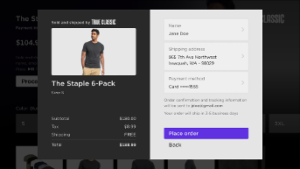
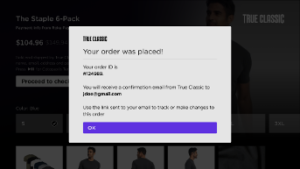
Image Credit: Roku
What’s in it for Advertisers?
This experience will help marketers to curtail the advertising funnel from brand awareness to purchases on big screens at home. It will strengthen the Roku-Shopify relationship, allowing the latter to launch ad campaigns with the help of Roku’s certified identity.
According to Roku, in addition to their audience being able to reach independent Shopify merchants, this integration will allow Shopify and advertisers to achieve in-depth insights into Roku’s customer data, purchase trends, and point-of-sale access.
The prime users of this collaboration will be Men’s Apparel Brand True Classic, the game-based, at-home workout challenge connector device Ergatta Rower, and wellness brand Olly.
Saaj Parikh, Director of Marketing, Ergatta, in her statement, said,
Our commerce efforts are all about meeting our target consumers where they are and providing a seamless path to purchase. Integrating the Shopify shopping experience with Roku was a no-brainer for us.
Paige Decker, Vice President of Growth at True Classic also stated that the Roku Action ads addressed their needs for “offering an amazing purchase experience and having a sound channel measurement.” She further added,
It helps us by providing a frictionless path to purchase for customers while allowing us to measure the impact of this strategy with end-to-end Shopify integration. Merging performance-based tactics on TV is a win-win.
Read more: Is 28% GST on Online Gaming A Setback For Gaming Industry?
Pinterest Adds New Checkout Feature To Drive More Brand Sales
Pinterest forays deeper into eCommerce with new shopping features at its annual advertising summit. The image-sharing site introduced direct in-app checkout and a new personalized recommendations feature.
Read more: Pinterest TV : Another Pinterest Attempt To Monetize Creators’ Efforts
Pinterest Check out- The in-app checkout feature is presently in beta. It provides users the ability to purchase within the Pinterest app. This is available only to some Shopify sellers in the U.S. However, Pinterest plans to provide access to the other U.S based Shopify retailers this year.
Additionally, Pinterest plans to introduce a new application programming interface (API) for shopping. It will make the uploading of product catalogs and listing easier for the retailers.
Your Shop- It is termed as a “personal shopping concierge, powered by a taste-driven algorithm”. The newly announced “Your Shop” feature is a recommendations engine that provides users personalized shopping pages, It suggests products, brands, and creators to users based on their activities and preferences.
Your Shop is also currently in beta, with plans to launch to the U.S pinners later this year with other extra nations.
Pinterest Trends- A Pinterest tool for analysis and insights. It helps businesses to understand real-time search data, more trend types, more granular audience tools, and personalized trend recommendations. The feature is available to businesses in the U.S, the U.K, and Canada, with plans to launch globally.
Earlier this year, Pinterest added the augmented reality feature “Try on For Home Decor”. It allows users to evaluate and check home decor options virtually before buying them.
Read More: Pinterest Rolls Out Suite Of Commerce-Friendly Features For Advertisers
What to know: Eventually, Pinterest users will be able to complete transactions without leaving the app, which can speed up the conversion process and lower friction. With Your Shop feature, Pinterest is competing with Instagram’s shopping tab. Pinterest can become a more compelling shopping destination with these retail-oriented features, giving merchants more ways to reach customers
Roku And Shopify Collaborate, Create App For SMEs To Launch CTV Ads
Shopify and Roku have announced a collaboration to provide a Roku app for creating CTV ads and managing campaigns to all Shopify businesses’ dashboards. The goal is to get a piece of the $16.4 billion spent on local TV advertising by small and medium-sized enterprises.
The inclusion of Roku in Shopify’s marketing solutions will make it the first-ever TV streaming app available in the Shopify App Store, allowing SMBs to strengthen their brands and generate income through TV advertising.
Roku’s platform, which is designed for merchants to employ on their own and with low ad budgets, has already shown to be successful, with one advertiser’s brand seeing a 63 percent increase in consideration.
Related News: TikTok Partners With Shopify In The Middle East
Roku And Shopify Collab: What Does This Mean For Sellers?
Thanks to Roku’s app, Shopify sellers of any size will be able to quickly construct TV advertising campaigns utilizing exact demographics and measurement across their marketing pipeline. This is a great leap forward from the traditional linear and cable TV advertising solutions, which have limited targeting and measurement possibilities.
Amir Kabbara, Director of Product, Shopify, said –
At Shopify, we’re focused on helping our merchants reach more consumers, boost their sales, and build thriving businesses.
By launching the new Roku app in the Shopify App Store, merchants can bring their products directly to TV screens, while allowing consumers to discover exciting new brands right from their living room
Shopify users can download the Roku app from the Shopify app store, following which they can easily choose their audience, budget, timing, and duration for their ad – and finally, submit the creative. Quickly, users will be able to commence their campaigns and communicate their brand message to the millions watching TV at home.
Interesting Read: Here, There, Everywhere, It Is Cross-Screen Advertising!
TikTok Partners With Shopify In The Middle East
Highlights
- TikTok for Business moves into social commerce with Shopify deal in the Middle East.
- Shopify merchants can now access TikTok for business Ads Manager without leaving the former’s dashboard.
TikTok recently extended a partnership agreement with Shopify to the Middle East after their collaboration last year. The partnership will enable brands to create shoppable video ads and campaigns directly geared towards TikTok’s high engaging community. Brands and advertisements are an integral part of the TikTok experience and customers in this region like to connect with their preferred brands. Shant Oknayan, general manager of global business solutions for TikTok in the Middle East, Africa, Turkey, and Pakistan says,
“We are very excited to announce this partnership with Shopify in the Middle East, giving merchants a unique platform to reach new audiences in an engaging and creative way like nowhere else.”
Neilson’s study states that 88% of TikTok users discover new content that they enjoy while using the app, and 50% discover new products through advertisements posted by a product or brand. To keep up with this, TikTok has taken several steps such as introducing new ad formats as well as achieving brand safety certification. Oknayan further said,
“As we continue to develop our platform to bring businesses of all sizes innovative and fun ways to connect with new customers, as well as get the best out of their campaigns, we are confident this partnership with Shopify is a big step in this direction and the start of a promising future in the e-commerce arena.”
Social commerce has been an emerging channel for merchants to reach out to newer audiences. Through this partnership, TikTok aims to make it easier for Shopify merchants to tap the creativity of the TikTok community and optimize their marketing campaigns. They can also benefit from the core functions of the TikTok For Business Ads Manager integrated into the Shopify dashboard. In simple terms, TikTok’s suite of ads allows to showcase creativity and tell stories legitimately, grow audiences and generate optimal results at a lower cost.
Satish Kanwar, Vice President of Product at Shopify expressing optimism said,
“TikTok is one of the world’s fastest-growing entertainment platforms with over 100 million highly engaged users in the US alone. The TikTok channel means Shopify merchants—even those without a strong TikTok following of their own yet—can connect with these new audiences using content that feels authentic and genuine to the TikTok experience.”
Some key points of the partnership include:
Seamless and Streamlines operation
Shopify Merchants can set up an account and payment options seamlessly as well as easily track conversions by installing TikTok Pixel.
One-Stop-Shop for all
Merchants can easily create and optimize campaigns, target audiences, and track performance all under one go
Testing New Commercial Features:
TikTok will also start testing new commercial features that will make it easy for users to discover Shopify merchants in the Middle East and shop their products within the app.
A Shopify Success Story- Heatonist, Purveyors Of Fine Hot Sauces
As cliche as it may sound, but “Variety is Spice of life.” Spice lovers always search for new hot sauces and Heatonist, the brainchild of Noah Chaimberg precisely has what they need. He started the business in 2013 by selling bottles sourced from independent brands on a pushcart and gradually expanded to an online hot sauce retail platform and subscription model alongside a personalized tasting room located at Williamsburg, New York.
After shifting its online store to Shopify, Heatonist witnessed tremendous growth in sales. Shopify provides all features to make a successful eCommerce website – user-friendly interface, reliable and secure domain, the capability to handle high traffic load, access to business apps, and more. It is noteworthy that Shopify powers one million businesses worldwide. Even though Heatonist runs a brick-and-mortar store, the hot sauce supplies reaches a larger audience through its online store and subscription model. The massive and positive response to its online store on Shopify emboldened Noah to entrust Shopify Fulfillment Network with his shipping needs. Furthermore, Heatonist switched to Shopify POS to take care of in-person sales and inventory for its two tasting rooms.
So, what is the business’s secret sauce? To offer fellow hot sauce lovers all-natural hot sauce made by small and independent makers all around the world as well as give a chance to taste before making a purchase.
What Makes The Brand Successful on Shopify?
It’s amusing and satirical way of branding. Heatonist “Purveyors Of Fine Hot Sauces” is the world’s most trafficked and top hot sauce website. Hover your cursor on each hot sauce bottle displayed to find an entertaining and playful description that echoes the tone of sophisticated wine connoisseurs.

Image Credit: Linkody
The descriptors are informative that exhibit a wide range of hot sauces from “aromatic” and “herbaceous” to “pepper” and “peach.” It also offers a live chat with their “hot sauce sommeliers” for guided tastings similar to their physical storefront. Adding to the wine analogy, it has a humorous and witty stance on hot sauces and offers the same cachet that is usually reserved for wines.

Image Credit: Heatonist Instagram page
The dynamic brand also has a remarkable presence on various social media channels. Be it the creative content on Instagram or curation of retweets related to popular Hot One series or hot sauces and any product announcements. Brand consistency, refreshing content, and customer experience distinguish Heatonist from its competitors. Apart from its social media engagement, it gets granular and specific with details that add to its branding efforts such as:
- Email Id: ilovehotsauce@heatonist.com
- Instagram hashtag #stayspicy
- Dedicated a product page for the hot sauces shown on the popular celebrity interview series Hot Ones on YouTube.
- Add a special and personal touch by stamping a handwritten note “Packed With Love” on every online order.
- Creating a “Heatonist Sauciety” as a part of the reward program and calling all members “Sauce-a-holics”.
How The Brand Found A Reliable Partner In Shopify Fulfillment Network?
With growing volumes and sales climbing up, packaging became more time and space consuming. For scalability and better customer experience, Heatonist was in search of third party logistics (3PL). However, previous experience with 3PL providers left a bad taste in the mouth and raised new problems. Customers complained about the packaging and delay in orders. The brand had transportation support but it was a challenge controlling how 3PL providers packaged and dispatched orders. In 2019, Shopify announced Shopify Fulfilment Network. A fulfilling experience with Shopify over its eCommerce solution and Point of Sales system encouraged Noah Chaimberg to opt for Shopify Fulfillment Network (SFN).
Fortunately, laying all eggs in the Shopify basket worked for the company and finally found a fulfillment solution. SFN met the company’s standards of packaging and the team’s commitment to consider every minute detail helped the Heatonist to grow. The costing of SFN is as per industry standard and is proved to be a highly dependable and efficient fulfillment partner. This partnership allowed Heatonist to increase its sales volume considerably and take advantage of any unexpected sales spikes. Heatonist enjoyed the following advantages:
- Guaranteed three-day shipping with improved customer experience
- No longer warning customers of potential fulfillment delays on the website.
- Opportunity to focus on building its brand—not logistics
SFN takes care of the heavy lifting as the shipping needs are meticulously met allowing Noah and the team to focus on other aspects of the business.
“Working with the team at Shopify Fulfillment Network has been great because it’s given us the confidence to focus on other areas of our business. Before, we were always holding the reins on growth. Now, having confidence on the fulfillment side lets us say, ‘Okay, how do we want to grow this company?”
-Noah Chaimberg
Final Words
There are no shortcuts to success and studying this brilliant and exemplary example can guide you in creating a successful Shopify store. Insights and learnings from such eCommerce victories can pave the way to build your brand. If you are looking for versatility, technical support, and the best user experience for your eCommerce store, Shopify it is! The journey of Heatonist starting from a pushcart to being the most trafficked hot sauce website in the world is inspiring. In addition to everything else, it has given all the small indie makers of all-natural hot sauce a chance to grow in this ecosystem. Remember the world is your oyster! The stage is ready and just a few clicks away to build your dream store.
TikTok To Move Into Social Commerce Game, Partners With Shopify
Highlights:
- TikTok is investing in a social eCommerce platform with an announcement of a global partnership with Shopify.
- The deal will help Shopify’s 1 million merchants to advertise their products to TikTok’s younger audience and drive sales.
- Shopify merchants will be able to sell products in the form of shoppable ads whereas TikTok users can click on an ad to buy the tagged products.
- All transactions will be executed via Shopify’s site.
TikTok announced a global partnership with the Canadian eCommerce platform Shopify to help brands and merchants advertise their products through shoppable videos. Through the new partnership, Shopify’s one million merchants will be able to create and connect their TikTok For Business account and turn their existing imagery into videos for ‘shoppable ads’. Purchases are executed on the Shopify platform and hence the transaction data and customer data remain with the retailer than TikTok.
Despite the White House executive order of the sale unknown, business operations for TikTok are as usual and continue to grow. This integration will help to create new avenues of income for TikTok creators apart from influencer partnerships. TikTok’s partnership with Shopify is a significant step by the video-sharing app to widen its nascent advertising ecosystem.
Run It Using Shopify Dashboard
As per TikTok, through the new TikTok channel, Shopify merchants can access core functions of the TikTok For Business Ads Manager without leaving the Shopify dashboard. Highlights include:

Image Credit: Shopify
- New, “1-click” pixel: Shopify merchants can install or connect their TikTok Pixel with a click of a button, making it quicker and easier to track conversions.
- A One-Stop-Shop for TikTok Campaigns: Merchants can create campaigns, target audiences, and track performance in one place.
- Creative Made Simple: The ad tools enable Shopify merchants to create native, shareable content into in-feed video ads that resonate with the community.
- Free Ad Credit: For enticement, eligible Shopify merchants can claim a $300 ad credit to jumpstart their first TikTok campaign.

Image Credit: Shopify
Expansion Of Other Shopping Features
Blake Chandlee, Vice President, Global Business Solutions at TikTok said,
“As social commerce proliferates, retailers are recognizing that TikTok’s creative and highly engaged community sets it apart from other platforms. We’re constantly exploring new and innovative ways to connect brands with our users, and Shopify is the perfect partner to help us grow and expand our commerce capabilities globally.”
TikTok is planning to test new in-app features that will let users discover Shopify merchants’ products and shop them directly within the app. The new features could be similar to the product tags that TikTok has been testing with some brands.

Image Credit: Social Media Today
The two companies will collaborate to test new commerce features in the coming months. However, no financial details are revealed about the tie-up by the companies.
Satish Kanwar, VP of Product at Shopify said,
“We’re thrilled to be the first partner to welcome TikTok to the world of commerce, particularly right now, as our merchants prepare for a busy online holiday shopping season.”
Will Walmart Be Able To Ink The Deal With TikTok?
Walmart has been interested in investing in TikTok to enhance its advertising strategy and enhance merchant traffic. However, the talks remain shrouded amidst political uncertainty. Even though the possible ban on TikTok is yet to go into effect, the collaboration between TikTok and Shopify might sign that it is not a major threat. For Shopify, the TikTok deal is more lucrative for the U.S markets.
TikTok has been steadily ramping its tools for merchants and brands in recent months. It introduced a self-serve advertising platform to help small businesses broader reach. It also debuted a marketing program with approved providers of advertising service to support brands in creating, executing, measuring, and boosting their ad campaigns. Meanwhile, in August it tested its first shoppable live stream with Ntwrk. TikTok has been trying to grow its revenue opportunities and advertiser base.
If it plays the cards the right way, TikTok can emerge as a powerful e-commerce engine. This is one of the main reasons for Walmart’s keen interest in buying a stake in the video-sharing app. As per Tik Tok, half of the users indicated that they discover new products through advertisements posted by a product or brand in the app. Such a high level of engagement is beneficial for merchants who are looking to reach the millennial generation whose spending power is high.
TikTok reports that the new channel for Shopify is now available in the US. It will become available in Europe and Southeast Asia in early 2021.
Facebook’s “Shop” Feature Breaks The Wall Between Social Media And Ecommerce
Facebook has recently launched an option of “Shops” on its social networking platform. This Will allow its 2.6 billion users an opportunity to shop while browsing through their favorite social networking website.
As the demand for the e-commerce market rises, Facebook sees this as an opportunity and is ready to cash more money. Facebook “Shops” will provide room to merchants, SMB, and product companies to build a virtual store on Facebook. Facebook is calling it “Social commerce”.
“We want to give people a place to experience the joy of shopping versus the chore of buying. And we want to help small businesses adapt and make it easier for people to discover and shop for things they love,” Facebook said in a press release.
To make things easy and secure, the products that will appear on Facebook and Instagram as the ad will not be linked to any third-party website or server. Instead, it will be linked to a zippy on the Facebook portal which will take the user to a catalogue from where the user can choose or purchase the product. It will also show the saved card details if the user has ever purchased from Facebook or any of its applications.

Image credit- Facebook.
Live shopping experience:
Facebook will also provide live shopping features on its platform. According to Facebook, People have always been showcasing their products in live videos. Now, they can link these products with their store. The products will appear on the bottom of their live feed. By tapping on the product on their screen users can get all the details of the product. Live shopping feature will be available worldwide to its users!

Image credit – Facebook.

Image Credit – Facebook
“Shops” will be an integral part of the Facebook family. Users can save products in their cart on Facebook, and complete the checkout process on Instagram, or vice-versa. Facebook aims to target small vendors for his aspirations, and nearly 1 million users have registered to be a part of this experiment.
The other principal dissimilarity from past commerce enterprise is that Facebook “required the small businesses to go all-in on our tools,” Zuckerberg said.
The platform is free for everyone and Facebook is partnering with other tech giants to provide services at the back-end.

Image credit – Facebook.
Zuckerberg further stated, “Rather than charge for Shops, we know if it’s valuable they’ll want to bid more for ads.”
One of the key partnership deals is made with “Shopify”, According to Facebook, in just a few clicks you can operate a Facebook shops account from Shopify.
Shopify founder and CEO Tobi Lutke said, “It’s an incredible new reality in the retail space to have these tools natively in the Facebook platform,” he further mentioned, for small businesses it’s very crucial to find new customers.
CEO Tobi Lutke added, “Communications is incredibly important, for so long that’s been monopolized by large CPG brands on television.”
According to him instead of going to different levels of media and advertisement, sellers will be able to reach directly to the customer. “The DTC industry, as some people call it, really happened on top of Facebook and Shopify.”
With Facebook focusing more on small scale businesses adding Shopify having the strength of entrepreneurs, the model looks like a rival of Etsy and doesn’t seem to target retail chains like Target.

Image credit – Facebook.
According to the Zukerberg and Lutke analysis, this model will help to empower small-scale businesses. Helping those sellers who are genuine, and want to provide efficient services to their customers. The model will help small businesses to highlight their product in the market without expensive advertising. As most of the small scale businesses can’t afford the luxury of advertisement.

Image credit -Facebook
The users will also be able to earn rewards for their purchase. Rewards will be known as loyalty points. Facebook will motivate the sellers to provide these points to the customer on their purchase. This will help them to lure more customers. Users will be able to easily keep track of their loyalty points.
Shopify Revenue Surges As Pandemic Brings More Business Online
E-commerce platform and payment provider Shopify reported its first-quarter revenue that surpassed analysts’ estimates as more businesses moved online to survive coronavirus pandemic.
The Ottawa-based company Shopify said in a statement that sales grew by 47% to $470 million from the same quarter a year ago. However, analysts expected revenues to come to around $443 million
The key metric of gross merchandise volume which represents all goods sold on the platform 46% to 17.42 billion compared to the previous year. Again, beating analysts expected volume to $16.68 billion.
While sales were booming, the company still posted a net loss of $31.4 million or 27 cents a share. However, on an adjusted basis, the company posted a profit of $22.3 million or 19 cents per share for the first quarter of 2020 compared with an adjusted profit of $7.1 million or six cents per share for the same period last year.
CEO Tobi Lutke said in the quarterly release,
We are working as fast as we can to support our merchants by re-tooling our products to help them adapt to this new reality. Our goal is that, because Shopify exists, more entrepreneurs and small businesses will get through this.
Moving Online
Shopify reported a fall of 71% in gross merchandise volume through its store point-of-sale as stores shut down due to pandemic between March 31 and April 24. Companies also downgraded from Shopify Plus to lower-priced plans.
Also, it throws light on the drop in point-of-sale purchases from the brick and mortar stores questions the sustainability of online switch. It provides store based point-of-sale systems to merchants to operate from a single platform in order to maintain online store and sales.
It is closely observing consumer spending habits online and the ability of brick-and-mortar retail merchants to shift sales online. According to the company statement, Shopify retailers managed to replace 94% of their store volume with online sales.
Retail merchants are adapting quickly to social-distance selling, as 26% of our brick-and-mortar merchants in our English-speaking geographies are now using some form of local in-store/curbside pickup and delivery solution, compared to 2% at the end of February.
Chief technology officer Jean-Michel Lemieux noted the surging demand and had U.S. Black Friday-type of traffic as businesses have used Shopify to stay afloat as nationwide lockdown forces retail store closure across the world.
Impact of COVID-19
This pandemic has strained small and medium-sized businesses and accelerated the shift of buying habits to eCommerce. Shopify introduced many initiatives to support merchants and help entrepreneurs start a business online during the ongoing COVID-19 pandemic, including, offering tools to businesses to open their own digital store online across channels including social media.
An extended 90 day free trial for new sign-ups, gift card capabilities to merchants, and introduction to in-store or curbside pickup and delivery options for greater flexibility in the movement of inventory between different locations.
The company stated that the new stores created on the platform grew 62% between March 13 and April 24 versus the prior six weeks, driven by both first times and established sellers. But is also added,
It is unclear how many in this cohort will sustainably generate sales, which is the primary determinant of merchant longevity on our platform.
What analysts have to say
Few analysts still don’t see Shopify profitable enough in the future to justify the current stock price. They believe the rally is overdone.
Barry Schwartz, chief investment officer at Baskin Wealth in Toronto notes that as they grow, the company will face fierce competition from rival Amazon. He added,
They’re up against some very heavy hitters and I don’t think those guys are going to let Shopify win everything.
Buying it here at that valuation, you’re essentially saying, ‘I don’t care.’
Canaccord Genuity downgraded the stock, with a warning “we’re not entirely convinced” that gross merchandise volume “is as bulletproof as perceived.”

